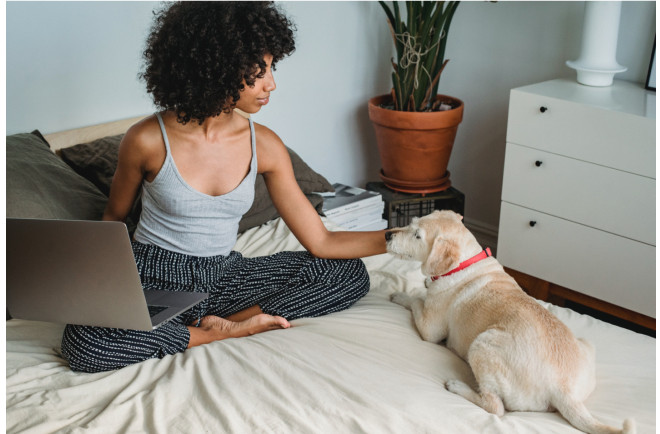
Image credit: Pexels
Source: h5ps://images.pexels.com/photos/5256078/pexels-photo-5256078.jpeg]
Being a first–me dog owner is both thrilling and nerve-wracking. Having an animal companion in your home is exci-ng, but it can also be worrisome to look a?er them and avoid making mistakes that may harm them. The list of most common new dog owner mistakes by Yahoo! includes the lack of prepara-on for your dog’s arrival, inconsistent training that may turn them into a trouble-making pets, and neglec-ng their health and safety.
However, these worries and poten-al mistakes don’t need to stop you from caring for a furry friend. With the right mindset, tools, and prepara-on, you can have an easier and more comfortable dog-rearing experience. As a first–me dog owner, here are some tools and accessories that may help you:
ID tag
Dogs are curious creatures, especially in new environments. You may o?en find them exploring different rooms and corners at home, or not at all if they’ve wandered outside your property—yikes! That means there’s a huge chance your new dog may get lost thanks to their curious nature. However, simply keeping a close eye on them won’t do the trick: if your dog moves fast and excited enough, it’s easy to lose track of them.
To be rid of the uncertainty, it’s thus crucial that the first thing you do when you have a new dog is to get them an ID tag. Our ar-cle “What Do I Put On My Dog’s ID
Tag?” emphasizes how your dog’s name, medical informa-on, and microchip informa-on (if applicable)—along with your phone number and address—will all be on this tag. This helps strangers locate you should they find your dog or allow them to provide necessary medical aVen-on while you’ve yet to be reunited. Always have your dog’s ID tag on their collar, especially if they’re an outside dog.
Floor vacuum cleaner
Dogs will shed their fur, regardless of if they’re long or short-haired. Unfortunately, these hairs accumulate quickly and may get caught in dust bunnies. This can turn your floor messy and poten-ally cause allergies.
Since pet hair scaVers quickly and is hard to clean, consider saving yourself the trouble and inves-ng in an automa-c floor vacuum cleaner like the iRobot Roomba s9+. Considered one of the best Roombas for pet hair it has a suc-on power that’s 40 -mes stronger than other cleaners, so it can easily vacuum the smallest hairs stuck in carpets or scaVered on -les. It even has Dirt Detect Technology that allows it to immediately clean up fallen fur once detected. Finally, it can clean pet waste, making it even more versa-le. Just remember not to leave your dog unaVended when your vacuum is ac-ve to avoid mishaps.
Dog gates
As men-oned above, dogs are curious. They’ll smell or lick any par-cle or substance they may find interes-ng, including toxic cleaning products.
Use dog gates to keep your new dog out of the bathroom, laundry room, or other areas that may have toxic chemicals—especially if you’re s-ll training them to stay out of certain rooms. The Carlson Extra Tall 36-inch dog gates will last your dog for years, even a?er they grow taller. They also come with walk-through doors if you want to train your dog to enter certain rooms on command or give them access to areas once it’s safe.
Pet camera
Leaving your dog unaVended can be anxiety-inducing. Not knowing if they’ve already chewed up your couch or have goVen themselves into harm when you’re out of the house can weigh on your mind.
This is why gehng a pet camera will be one of the best possible decisions you can make as a new dog owner. For this, consider The Pet 2. This is currently the top Petcube dog camera thanks to its high-quality video streaming accessible by an app, two-way audio system, and built-in laser toy that you can remotely control on your phone. Addi-onally, it has a mo-on and sound detector that sends alerts, so you’ll get no-fied if your dog is moving or making noise.
Caring for a dog for the first -me should be a comfortable experience. Invest in the right tools and accessories to make dog-rearing as safe and enjoyable as possible.
Article written by Ressy Jane Exclusively for Silver Paw


 Becoming a digital nomad is all the rage these days, and it’s no surprise why. Working remotely gives you the freedom to work from anywhere in the world, while still earning a steady income. But what if you have a furry friend who needs your care? You don’t have to leave them behind – here are tips and tricks shared by
Becoming a digital nomad is all the rage these days, and it’s no surprise why. Working remotely gives you the freedom to work from anywhere in the world, while still earning a steady income. But what if you have a furry friend who needs your care? You don’t have to leave them behind – here are tips and tricks shared by 
 There’s nothing cuter than a puppy photo shoot. But dogs don’t always make the best photography subjects — no matter how much you want a perfect shot for Instagram. Check out these tips from
There’s nothing cuter than a puppy photo shoot. But dogs don’t always make the best photography subjects — no matter how much you want a perfect shot for Instagram. Check out these tips from 





